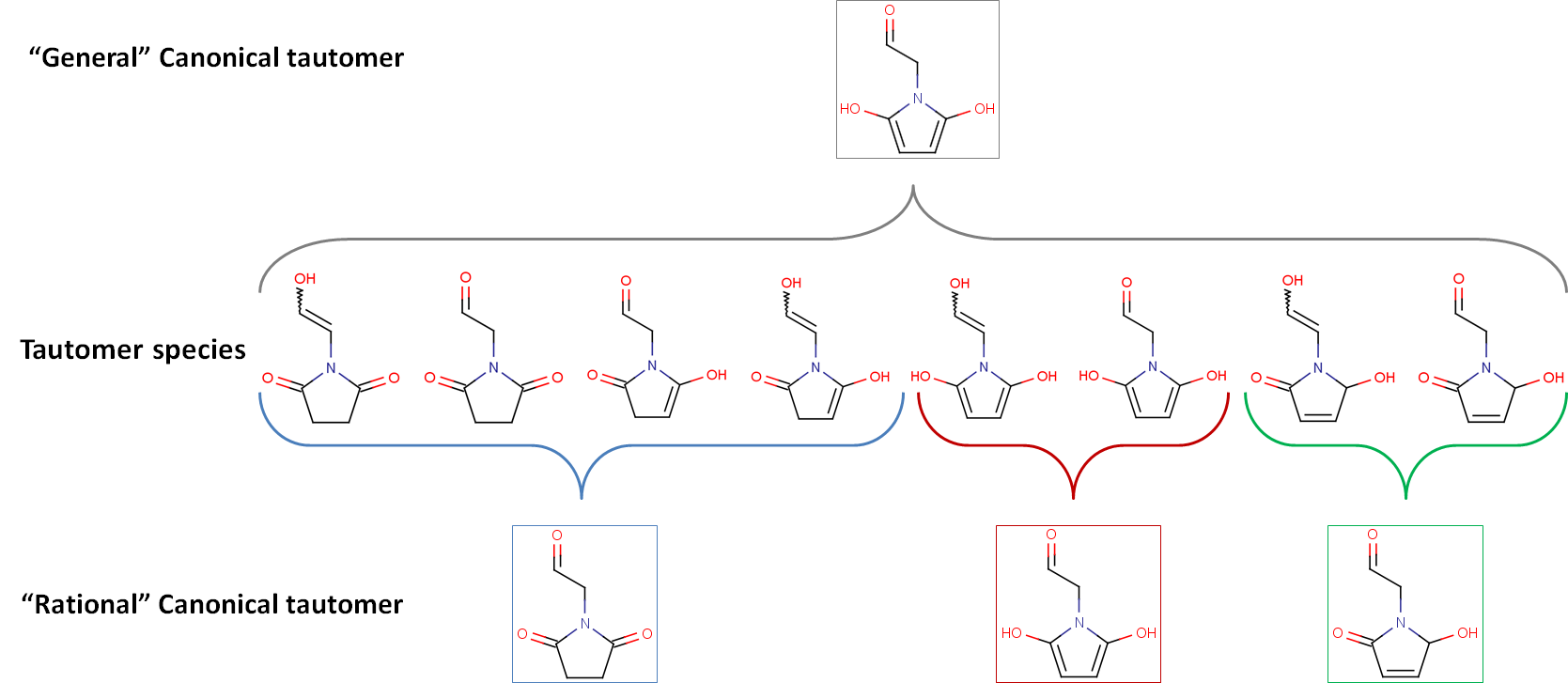This page explains the concepts behind our tautomer generation process:
Introduction
Tautomers are structural isomers of organic compounds that are in dynamic equilibrium due to the migration of a proton. The isomerization reaction by which tautomers are interconverted is called tautomerization.
In the following picture X, Y and Z atoms can be C, H, O or S atom, and H becomes an electrophile center during isomerization. When the electrophile center is a H+, the isomerization is also known as prototropy.

Fig. 1 Tautomerization (isomerization) example
In solutions - in which tautomerization is possible - a chemical equilibrium of the isomers will be reached while the reaction results in the formal migration of a hydrogen atom or proton accompanied by a switch of a single bond and an adjacent double bond. Commonly, the catalysts of these reactions are acids or bases.

Fig. 2 Chemical equilibrium between tautomers
Generating tautomers
Different tautomers of a compound can be generated with the help of the Tautomer Generator Plugin. Tautomer Generator Plugin first identifies possible proton donors and acceptors in a molecule and finds tautomerization paths between them. Depending on the desired operation
- it combines the paths into regions (Generic tautomer),
- combinatorially generates all possible tautomeric forms (All tautomers),
- filters and ranks enumerated isomers (Major tautomer and Dominant tautomer distribution);
- furthermore, it can provide general and rational canonical tautomers.
General canonical tautomers are evaluated by the systematic rearrangement of single and double bonds in the available tautomeric regions. Using rational tautomer generation option, the tautomerization products are generated according to empirical rules. Rational tautomer generation narrows down the possible tautomerization paths and leads to chemically more feasible products. You can find detailed description of the different tautomer generation options here.
Comparison of general and rational canonical tautomers
The example below illustrates that general and rational canonical tautomers can differ in number.
Fig. 3 General and rational canonical tautomers
Rational canonical tautomer generation classifies isomers according to structural similarities: isomers in a group can be converted into each other by simple low energy transformations, while transformation between the isomers of two different groups requires higher energy steps (e.g. breaking/forming aromatic system).
The following image shows the previous example from a different angle: in line with the definition of tautomerization, all isomers of a compound are in equilibrium, e.g. isomer B - outlined in red - is in equilibrium with its seven tautomers via multiple steps. Note that isomer G or H can transform into isomer E or F only in multiple steps through isomer D.
Fig. 4 Equilibrium of tautomers

